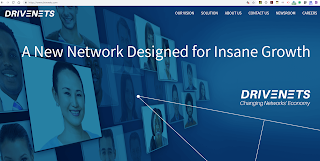Huawei has focused on cloud-native as the cornerstone of its 5G core network solutions.
 Speaking at this week's Huawei Global Analyst Summit in Shenzhen, Jason Dai, President of Huawei Cloud Core Network Strategy & Business Development Dept, said Huawei is striving for a fully cloudified core network based on technologies such as three-layer decoupling, stateless design, cross-DC disaster recovery, containers, and service-based frameworks. Huawei's flow control algorithm enables 5G core networks to cope with traffic bursts caused by ultra-dense connections. End-to-end network slicing enables new service models. Huawei 5G core network is based on the distributed architecture of control plane and user plane separation (CUPS), with its centrally managed control planes and one-stop plug-and-play ready user planes. On-demand scheduling based on heterogeneous edge computing enables services to be processed only by the most suitable resources.
Speaking at this week's Huawei Global Analyst Summit in Shenzhen, Jason Dai, President of Huawei Cloud Core Network Strategy & Business Development Dept, said Huawei is striving for a fully cloudified core network based on technologies such as three-layer decoupling, stateless design, cross-DC disaster recovery, containers, and service-based frameworks. Huawei's flow control algorithm enables 5G core networks to cope with traffic bursts caused by ultra-dense connections. End-to-end network slicing enables new service models. Huawei 5G core network is based on the distributed architecture of control plane and user plane separation (CUPS), with its centrally managed control planes and one-stop plug-and-play ready user planes. On-demand scheduling based on heterogeneous edge computing enables services to be processed only by the most suitable resources.
Huawei also noted the following milestones:
https://www.huawei.com/us/press-events/news/2019/4/huawei-5g-core-network
 Speaking at this week's Huawei Global Analyst Summit in Shenzhen, Jason Dai, President of Huawei Cloud Core Network Strategy & Business Development Dept, said Huawei is striving for a fully cloudified core network based on technologies such as three-layer decoupling, stateless design, cross-DC disaster recovery, containers, and service-based frameworks. Huawei's flow control algorithm enables 5G core networks to cope with traffic bursts caused by ultra-dense connections. End-to-end network slicing enables new service models. Huawei 5G core network is based on the distributed architecture of control plane and user plane separation (CUPS), with its centrally managed control planes and one-stop plug-and-play ready user planes. On-demand scheduling based on heterogeneous edge computing enables services to be processed only by the most suitable resources.
Speaking at this week's Huawei Global Analyst Summit in Shenzhen, Jason Dai, President of Huawei Cloud Core Network Strategy & Business Development Dept, said Huawei is striving for a fully cloudified core network based on technologies such as three-layer decoupling, stateless design, cross-DC disaster recovery, containers, and service-based frameworks. Huawei's flow control algorithm enables 5G core networks to cope with traffic bursts caused by ultra-dense connections. End-to-end network slicing enables new service models. Huawei 5G core network is based on the distributed architecture of control plane and user plane separation (CUPS), with its centrally managed control planes and one-stop plug-and-play ready user planes. On-demand scheduling based on heterogeneous edge computing enables services to be processed only by the most suitable resources.Huawei also noted the following milestones:
- more than 580 commercial cloud core network contracts worldwide
- 40 commercial 5G contracts worldwide
https://www.huawei.com/us/press-events/news/2019/4/huawei-5g-core-network
















